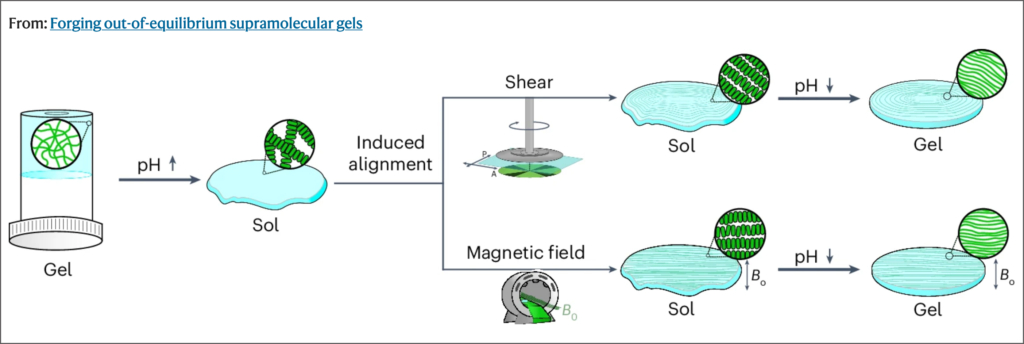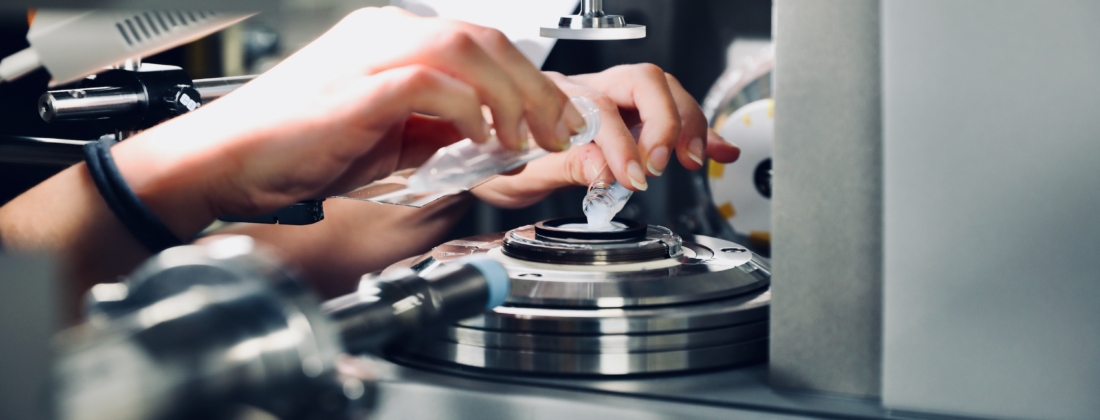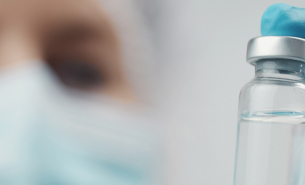A research group from the University of Glasgow in the United Kingdom reports in the journal Nature Synthesis that dynamic supramolecular hydrogels can be designed with desired structures using a new ‘forging’ technique. The out-of-equilibrium system was tested using MAX IV’s Small Angle X-ray Scattering (SAXS) beamline, CoSAXS.
“This approach allows us to make materials that cannot be formed directly. It really shows what is possible,” said Dave Adams, study author and Professor of Materials Chemistry at the University of Glasgow. “The novelty here is the application of an external field during this [dynamic] process.”
Research on supramolecular hydrogels holds promise for the fabrication of biomimetic materials, which mimic natural biochemical processes, and for applications in optoelectronics, a technology combining electronics and light. These hydrogels are known for spontaneous self-assembly, whereby they form a 3D network of macromolecules.
Out-of-equilibrium systems or those which exhibit continuous change, are common in nature. For example, in photosynthesis, or in cells which require internal dynamic action to function.

In previous studies, the research group showed that a controlled change in pH can improve the properties of supramolecular hydrogels. “In our current study, we have added an external force and refer to this as forging essentially like a blacksmith, adding force for heating and cooling metal,” explained Adams.
The researchers worked with gelator naphthalene dipeptide (L,D)-2NapFF. By pre-programming a rise and decrease in pH, the gel was transformed to a colloidal solution and then reformed to a gel. At the evolving colloidial state, the sample was placed in an electromagnetic setup at CoSAXS beamline utilising a new advanced technique that combines a rheometer, SAXS and polarised imaging.
The Rheo-SAXS technique was developed to stimulate the Small- and Wide-angle X-ray Scattering (SWAXS) user communities of CoSAXS and ForMAX beamlines and other user groups—industrial and academic—as part of the Chalmers University-MAX IV collaboration.
At CoSAXS, the external force applied by the rheometer induced alignment of the gel’s structural fibres. This structural change remained fixed even at the final gel state. By varying the application of force over time, the researchers observed changes in mechanical properties and triggered a state of anisotropy—a property of directional dependence along different axes—in the hydrogels. This was probed using X-rays in the SAXS experiment.
“The work here is part of our wider goal of understanding and controlling supramolecular structures. Overall, I think this is showing the control we have over these self-assembled systems and opens the opportunity to prepare and control materials with a high degree of control,” said Adams.




